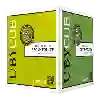
Winery The Wine AtlasSauvignon Gris
This wine generally goes well with vegetarian, poultry or lean fish.
Food and wine pairings with Sauvignon Gris
Pairings that work perfectly with Sauvignon Gris
Original food and wine pairings with Sauvignon Gris
The Sauvignon Gris of Winery The Wine Atlas matches generally quite well with dishes of shellfish, spicy food or poultry such as recipes of curried mouclade à la charentaise, salmon steak on a bed of leeks or keftas tajine with eggs.
Details and technical informations about Winery The Wine Atlas's Sauvignon Gris.
Discover the grape variety: Rubilande
Rubilande rosé is a grape variety that originated in . This grape variety is the result of a cross between the same species (interspecific hybridization). It produces a variety of grape specially used for wine making. It is rare to find this grape to eat on our tables. Rubilande rosé can be found in the following vineyards: Rhône Valley, Loire Valley, Savoie & Bugey, Beaujolais, Languedoc & Roussillon.
Informations about the Winery The Wine Atlas
The Winery The Wine Atlas is one of of the world's greatest estates. It offers 27 wines for sale in the of Côtes de Gascogne to come and discover on site or to buy online.
The wine region of Côtes de Gascogne
The wine region of Côtes de Gascogne is located in the region of Comté Tolosan of Vin de Pays of France. Wineries and vineyards like the Domaine Sichel or the Domaine Haut-Marin produce mainly wines white, red and sweet. The most planted grape varieties in the region of Côtes de Gascogne are Colombard, Gros Manseng and Merlot, they are then used in wines in blends or as a single variety. On the nose of Côtes de Gascogne often reveals types of flavors of red fruit, tangerine or jam and sometimes also flavors of watermelon, pomegranate or lemon grass.
The wine region of Comté Tolosan
Comte Tolosan is a PGI title that covers wines produced in a large area of Southwestern France. The PGI basin encompasses 12 administrative dePartments and is home to a wide range of appellations d'origine contrôlée (AOC) such as Jurançon, Cahors and Armagnac. The IGP label provides a geographical classification for wines that are not classified for AOC level appellations due to Grape variety or winemaking style. The region is part of the Aquitaine basin - the plains that lie between the Pyrenees, the Massif Central and the Atlantic Ocean to the west.
The word of the wine: Residual sugars
Sugars not transformed into alcohol and naturally present in the wine. The perception of residual sugars is conditioned by the acidity of the wine. The more acidic the wine is, the less sweet it will seem, given the same amount of sugar.












